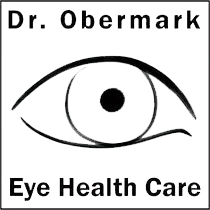Dry Eyes: Ocular Surface Disease

Do your eyes often feel dry, itchy, gritty, or fatigued? You're not alone. One of the most frequent complaints patients share with eye doctors is persistent dry eye discomfort in Poplar Bluff MO and Sikeston MO. Clinically known as Ocular Surface Disease, this condition is often linked to either poor tear quality or reduced tear production—and it can affect daily comfort, visual clarity, and overall quality of life.
At any of our Dr. Obermark Eye Health Care locations, our experienced teams understand how disruptive dry eye can be. From blurry vision to difficulty working on digital devices or driving at night, untreated dry eye symptoms can make everyday activities challenging. That’s why we offer advanced diagnostic tools and customized treatment plans to help you find lasting relief.
Common Dry Eye Symptoms
Dry eye symptoms vary from mild to severe and can affect one or both eyes. You may experience:
- A burning or stinging sensation
- Feeling like there’s sand or grit in the eyes
- Redness or irritation
- Excessive tearing (a reflex to dryness)
- Stringy discharge or mucus
- Sensitivity to light (photophobia)
- Intermittent blurry vision
- Tired, heavy eyes, especially later in the day
- Discomfort with contact lenses
- Difficulty focusing on screens or reading
- Increased irritation in dry or windy environments
If these symptoms are part of your daily routine, don’t ignore them. Chronic dry eye can worsen over time and may lead to more serious complications if not treated properly.
What Causes Dry Eye?
Dry eyes can result from a wide range of factors. These include environmental conditions, lifestyle habits, health issues, and aging. Understanding the root cause is essential for effective treatment.
Top Causes of Dry Eye Include:
- Age-related decline in tear production
- Medications like antihistamines, decongestants, antidepressants, and blood pressure drugs
- Medical conditions such as diabetes, thyroid disorders, rheumatoid arthritis, or Sjögren’s syndrome
- Hormonal changes during pregnancy, menopause, or while using birth control
- Prolonged screen time which reduces blinking frequency
- Dry, windy, or smoky environments, including frequent air conditioning or heating
- Wearing contact lenses for long periods
- Eye surgeries such as LASIK or cataract procedures
- Poor diet low in omega-3 fatty acids
- Eyelid inflammation (blepharitis) or blocked oil glands
- Insufficient blinking due to intense focus while reading, driving, or using screens
Because dry eye is often multifactorial, a customized evaluation is the first step to lasting relief.
How Dry Eyes Are Diagnosed
A precise diagnosis is key to proper management. Our optometry teams use advanced technologies and a patient-centered approach to evaluate the health of your tear film and ocular surface.
Your exam may include:
Patient History & Lifestyle Evaluation
We’ll review your health background, medications, environment, and daily activities to identify risk factors contributing to dry eye.Comprehensive Eye Exam
A complete examination of the eyelids, cornea, conjunctiva, and tear ducts to identify inflammation, meibomian gland dysfunction, and structural issues.Tear Film Testing
- Schirmer Test: Measures how much moisture your eyes produce over a short time using paper strips.
- Tear Break-Up Time (TBUT): Checks how long your tear film remains stable before breaking down.
- Tear Osmolarity: Evaluates salt content in your tears—high osmolarity often indicates poor tear quality.
Ocular Surface Staining
Special dyes highlight damaged areas on the surface of the eye, showing how dry or irritated the eyes are.Meibomian Gland Evaluation
These glands produce the oily layer of your tear film. We assess their function through gland expression or meibography.Inflammation Marker Testing
Some cases may involve testing tear samples to detect inflammation, helping guide treatment decisions.Symptom Impact Survey
You may complete a short, standardized questionnaire to help quantify how dry eye affects your day-to-day life and track treatment progress over time.
Dry Eye Treatments: Tailored to You
Managing dry eye requires more than just eye drops. We create personalized treatment strategies to address the unique cause of your symptoms—whether that’s inflammation, tear film instability, gland blockage, or environmental triggers.
Available Treatment Options Include:
- Artificial Tears
Preservative-free or medicated over-the-counter drops can help lubricate the eyes temporarily. - Prescription Eye Drops
Medications like Restasis or Xiidra help reduce inflammation and promote natural tear production over time. - Lifestyle & Environmental Adjustments
Using humidifiers, taking screen breaks, and reducing air exposure can go a long way in minimizing symptoms. - Eyelid Hygiene & Warm Compresses
Daily cleaning and warm compresses support healthy oil glands and relieve blockages that worsen dryness. - Dietary Supplements
Adding omega-3 fatty acids (via flaxseed oil or fish oil) can improve tear composition and reduce inflammation. - Punctal Plugs
Tiny inserts placed in the tear ducts help retain moisture by slowing tear drainage. - Specialized Contact Lenses
Scleral and bandage lenses offer protection and hydration, especially helpful for severe dry eye sufferers. - Tear-Stimulating Medications
Oral medications may be used to stimulate tear production, particularly in patients with autoimmune conditions like Sjögren’s. - Advanced Therapies
Options like autologous serum eye drops or intense pulsed light (IPL) therapy may be considered in more advanced or resistant cases. - Treatment of Underlying Conditions
Addressing chronic eyelid inflammation, meibomian gland dysfunction, or systemic health issues is essential to resolving dry eye at its source.
Don't Let Dry Eye Disrupt Your Day
You shouldn’t have to live with burning, blurry, or irritated eyes. At Dr. Obermark Eye Health Care, we’re dedicated to helping you find long-term relief through targeted, modern treatments that work. Whether you’ve just started noticing symptoms or have been struggling for years, we’re here to help.
Call today to schedule your dry eye consultation in Poplar Bluff MO and Sikeston MO. Let us help restore comfort, clarity, and confidence in your vision.**



